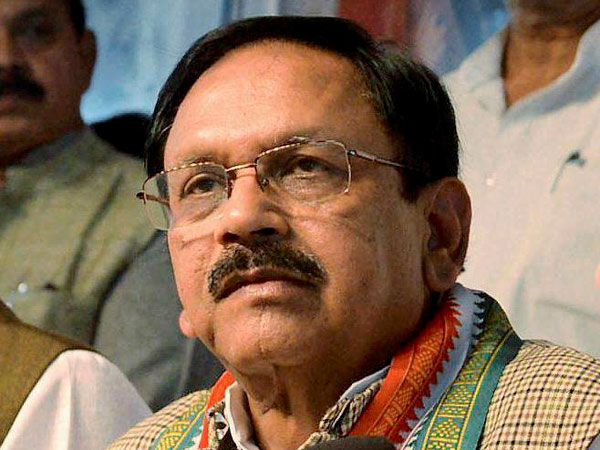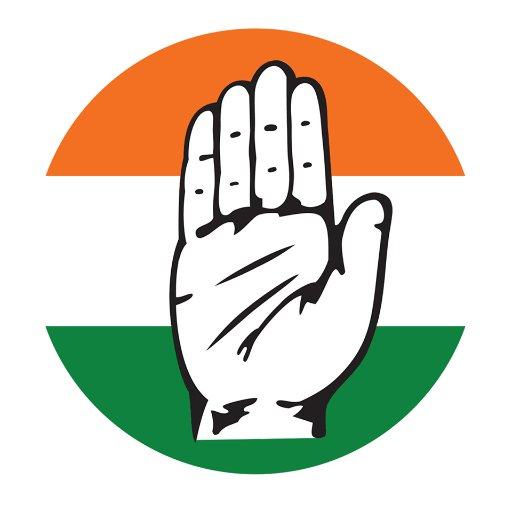Congress has a History of Service, Struggle and Sacrifice

- Suresh Pachouri
Congress has a glorious history of service, struggle and sacrifice - the history of serving the people of the country, the history of getting freedom to the country and the history of the ‘Navnirman’ of the country. On December 28, 1885, on the initiative of Shri A.O. Hume, people of political and social ideologies from different provinces of the country gathered on one platform at Gokuldas Sanskrit College ground in Bombay (now Mumbai). This political unity was transformed into an organization, which was named ‘Congress’. Shri W.C. Bonnerjee became the first President of the Congress. In his presidential address, he emphasized on creating a new environment of social harmony in the country. Great leaders like Anne Besant, Lala Lajpat Rai, Gopalkrishna Gokhale, Lokmanya Tilak, Subhash Chandra Bose, Sardar Vallabhbhai Patel and Pandit Jawaharlal Nehru led the Congress from time-to-time.
Congress got the leadership of the great personality like Mahatma Gandhi. Through Satyagraha and mass movement, Mahatma Gandhi imbued the freedom movement with people’s thoughts and considerations. Mahatma Gandhi started social revolution through non-violence, interfaith equality and constructive programmes. Under his leadership, not only did the freedom movement reach its decisive phase, but the Congress gained a wide mass base.
Loud cries of “Freedom is our birthright and we shall have it” jolted the slumbering nation. The slogan of “You give me blood, I will give you freedom” agitated the young generation of India and the people of India sacrificed their bodies, their minds and their lives at the call of “Do or die” and “British Quit India”.
The history of any institution is the glory of its members and its leadership. Congress leaders were martyred for the unity and integrity of the country. At the time of partition of India, Mahatma Gandhi was martyred during the frenzied communal violence spread across the country. Pandit Jawaharlal Nehru linked India’s freedom struggle with the worldwide struggle against imperialism. Pandit Nehru put social harmony into practice. As Prime Minister, Pandit Jawaharlal Nehru laid the foundation of modern and strong India. After Nehru Ji, Shri Lal Bahadur Shastri took over the reins of power and filled new enthusiasm in the whole country with his slogan - ‘Jai Jawan Jai Kisan’.
Indira Ji, after Shastri Ji, - like a visionary skilled craftsperson - expressed her resolve to remove the inequalities prevalent in the society and gave it a concrete form through a 20-point socio-economic programme. The dissolution of the Congress in 1969 is an important chapter in the purification of the Congress under the leadership of Smt. Indira Gandhi. This was a period when ancient and regressive forces were at friction with modernity and progressive forces in the country. In this campaign, the Progressive Party was led by Smt. Indira Gandhi and eventually the Progressive Party won. Indira Ji made several changes in the functioning of the Congress to combat poverty, unemployment and inequality.
Congress has seen many ups-and-downs of victory and defeat during its long history. During 1977-78, many big stalwarts of Congress had left Indira Ji’s side and joined the ruling Janata Party, but the common workers’ faith rested in Indira Ji. On January 2, 1978, history repeated itself and the Congress split again. Smt. Indira Gandhi, taking a far-sighted step, formed a new party (Congress-I) and the people of the country expressed their faith in the leadership of Indira Ji considering Congress-I as the real Congress. Indira Ji gave new strength to the Party by connecting the Congress with the hopes and aspirations of the common people. Indira Ji made the Congress organization capable and powerful. Indira ji sacrificed her life for the unity and integrity of the country.
Shri Rajiv Gandhi took over the leadership of the Congress after Smt. Indira Gandhi. Rajiv Gandhi was a politician determined towards the overall development of India. The development of India was his only agenda and a developed modern India was what he envisioned. Unfortunately, after some time, he met untimely death.
Smt. Sonia Gandhi took up the task of fulfilling the unfulfilled dreams of Rajiv Ji and took a pledge to save the legacy of Gandhi Ji, Indira Ji and Rajiv Ji’s martyrdom and service to the nation. Congress returned to central power in 2004 due to the influence of Smt. Sonia Gandhi’s extraordinary personality and the hard work of innumerable Congress workers. Reaching the pinnacle of power, Smt. Sonia Gandhi set a unique example in Indian politics by giving up the post of Prime Minister at the voice of her conscience and the responsibility of the post of Prime Minister was handed over to the famous economist Dr. Manmohan Singh.
The Congress-led central government made many welfare schemes for the welfare of the common people of the country. It enacted ‘Right to Information’ law, ‘Education Guarantee Act’ for children, ‘Midday Meal Scheme’, ‘Mahatma Gandhi NREGA Act’ (MNREGA), ‘National Rural Health Mission’, ‘Rajiv Gandhi Rural Electrification Scheme’ and ‘Food Security Act’. About 72 thousand crore rupees loan waiver was given to the farmers of the country and the MSP price of the farmers’ produce was increased.
Whenever non-Congress governments have come to power at the centre, the country’s economy has collapsed; racist, opportunistic and sectarian alliances have strengthened. The moral values of secularism have been hurt and the welfare of the poor, weaker sections and minorities has not been done. Under the BJP rule, the country and the society today are caught in the web of those issues and topics which are not really concerning the public.
On the 75th anniversary of independence, the Congress organized a ‘Nav Sankalp Shivir’ in Udaipur to reflect on the current situation in the country. In this camp, the Congress Party decided to launch a public awareness campaign against the economic, social and political issues that were dividing the country. As a result, began the 3500 kilometre long ‘Bharat Jodo Yatra’ from Kashmir to Kanyakumari, led by Shri Rahul Gandhi.
Shri Rahul Gandhi has followed the path shown by Mahatma Gandhi through ‘Bharat Jodo Yatra’. Rahul Gandhi Ji’s ‘Bharat Jodo Yatra’ reminds of Mahatma Gandhi’s ‘Dandi March’, of ‘Bhoodan Yatra’ of Sant Vinoba Bhave, of Smt. Indira Gandhi’s ‘Belchhi Yatra’, of Shri Rajiv Gandhi’s ‘Sadbhavna Yatra’. Shri Rahul Gandhi’s ‘Bharat Jodo Yatra’ reminds us that the path of Congress is to unite, to take everyone along, to participate in everyone’s happiness and sorrow alike.
Shri Rahul Gandhi’s ‘Bharat Jodo Yatra’ has infused new energy in Congress, the morale of Congress workers is also shot high. It is the need of the hour that every Congress worker should ensure his/her participation in the ‘Bharat Jodo Yatra’ by treading step-by-step with Rahul Gandhi Ji.
On the occasion of its foundation day, the Congress needs an overview of its glorious past, introspection in the new present and contemplation of a bright future. In the present circumstances, the Congress has to stand up to the challenge of the passion and power blinded government with unshakable determination, clear direction and strong intentions. It is the need of the hour that in the changed circumstances there should be harmony between the experienced leaders of the Congress organization and the energetic young leaders.
It is necessary that the Congress should maintain live contact with the public as per the intention of its energetic, resolute leader Shri Rahul Gandhi and should struggle to solve public problems. From December 28, 1985 till today, Congress has covered a long journey. In the long history of Congress, there is a saga of contemplation, sacrifice, struggle and construction.
(The author has been Minister of State for Defense Production, Personnel and Parliamentary Affairs, Government of India)







